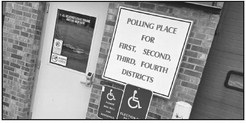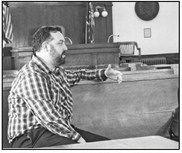County board must look at dams as an investment in the future
When it comes to making a decision on repairing or replacing the county’s dams, officials need to look beyond short-term sticker shock and instead look at them as the long-term investments they are.
Both the Chelsea Lake Dam and Camp 8 Dam need to be replaced. Both provide for and enhance recreational areas for residents and visitors serving as important tourism draws.
Last week, the county learned of the need to replace the sluice gate at Miller Dam (Chequamegon Waters Flowage) this is the county’s largest dam and the flowage is a major tourism attraction in the county. The expected lifespan of the new dams is projected to be 80-plus years with the repairs having a similar expected lifespan.
Combined the cost of the three projects is in excess of $650,000.
On the scale of a household, farm or small business this is a lot of money. Even in terms of local government it is equivalent to a major village, city or town infrastructure project and something that needs to be planned for.
While not an insignificant expenditure at the county level, the total impact of the dam work on the county’s $27 million budget will be small. The impact of the expenditures on taxpayers is likewise small because the money is planned to come out of logging revenue in the Taylor County Forest.
This impact is further reduced by taking advantage of state grants which will cover up to half the cost of the work bringing the county’s cost down to about $300,000.
The problem with the grant is that while all the projects would have had the necessary points to qualify for full funding in past years, it remains to be seen how many projects will get funded this grant cycle. The county will also have to pay out the money and wait to be reimbursed by the state.
When it comes to figuring out how to pay for these costs, the county has options.
The first and simplest is to deplete reserves and pay them out of the existing forestry funds in this year’s and next year’s budgets. While having the same appeal as ripping off the bandage in one jerk, this option hampers the county’s abilities to do other projects until those reserves grow.
A better option would be to borrow the money for the projects and pay the debt off over several years. Given the long expected lifespan of the projects, spreading the cost over five to 10 years makes sense from a cash flow perspective. If interest rates were high borrowing would have less appeal, but as it is, the interest rates, especially for governments, remain low. Taylor County is historically debtaverse choosing to pay for what it can afford out of the current year’s budget. While this is commendable when it comes to personal finances, it can sometimes work against the county when it comes to qualifying for grants or other government funding.
The county is not solely tied to incurring long-term debt. Supervisors could also look at a combination of short-term financing and rolling this project into a larger bond issue in the future. This makes sense with the county already looking at spending $1.2 million to replace the highway shop in Rib Lake and the remaining debt on the courthouse expansion project being paid off within the next few years.
Taylor County supervisors need to look to the future when it comes to dams and not allow sticker shock to push them into making choices that look good in the short-term but will have longterm impacts.




